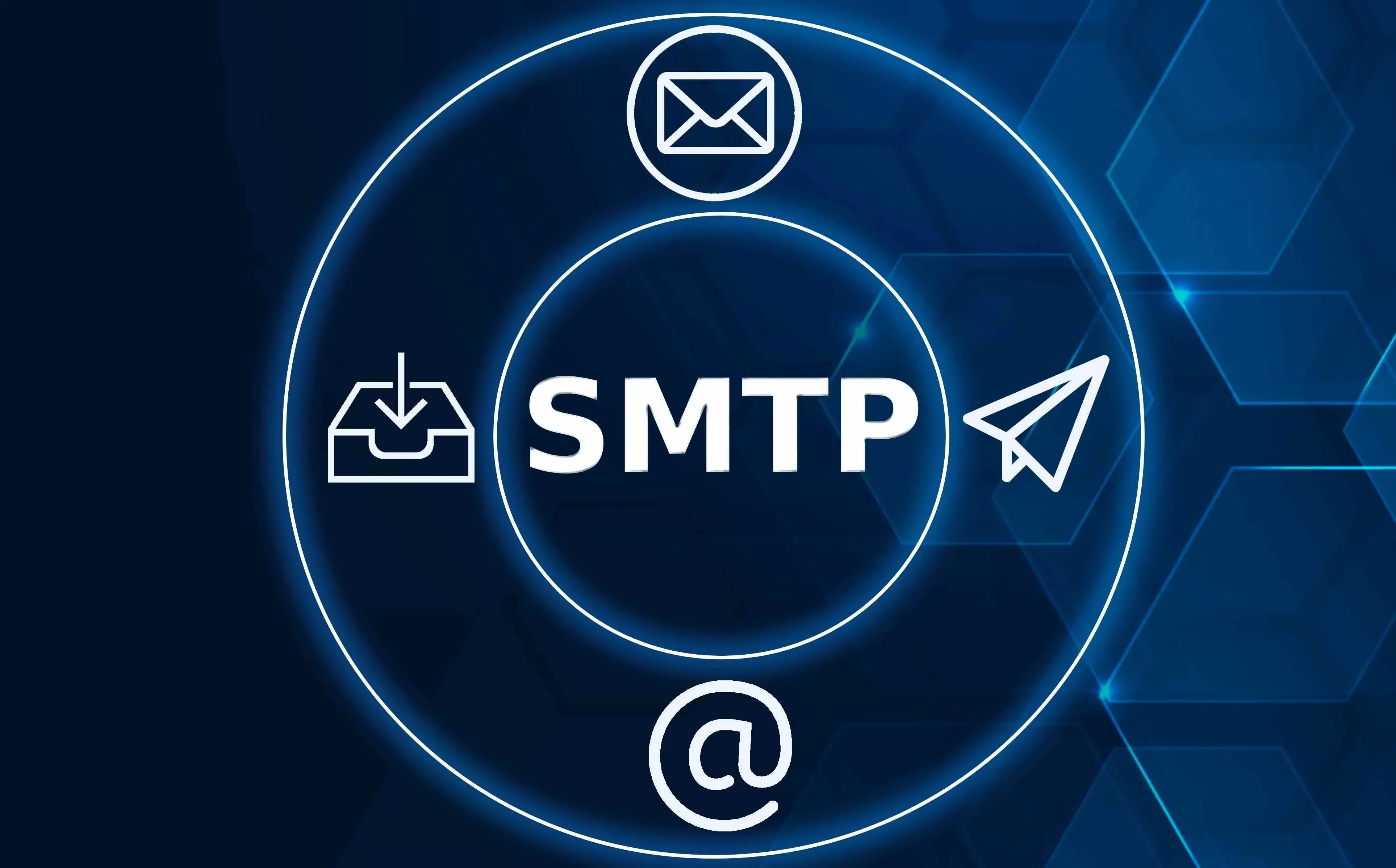SMTP serves as the backbone of email delivery on the Internet, enabling the transfer of messages from your email client to the recipient's server. Choosing the right SMTP port is crucial for secure and efficient email delivery.
In this article, we will guide you through the process of selecting the right SMTP SMTP port tailored to your specific needs. We will explore available SMTP ports, discuss their pros and cons, and help you make an informed decision to enhance your email experience.
What is SMTP and Why Does It Matter?
SMTP, or Simple Mail Transfer Protocol, is a fundamental part of email communication on the Internet. It is the protocol responsible for the transmission of email messages from one server to another, ensuring that your emails are delivered to the intended recipients.
SMTP serves as the digital postman of the online world. When you compose an email and click "send," your email client or server uses SMTP to send that message to the recipient's email server, which then uses POP3 or IMAP to deliver it to the recipient's inbox.
SMTP's importance lies in its role as the standard for email delivery. It ensures that your emails are routed correctly, regardless of the email client, server or the recipient’s provider. Without SMTP, seamless email communication as we know it today would not be possible.
In essence, SMTP is the invisible force that makes email travel swiftly and securely across the Internet, connecting people, businesses, and organizations globally. Understanding SMTP and its intricacies is crucial for reliable and efficient email delivery.
Importance of Choosing the Right SMTP Port
Selecting the correct SMTP (Simple Mail Transfer Protocol) port is crucial for both the security and deliverability of your email messages.
Security
Encryption: SMTP ports are directly linked to the security of your email communication. The right port choice determines whether your emails are transmitted securely or are vulnerable to interception. Ports 587 and 465 are associated with encryption, while port 25 is not.
Privacy: Encryption, provided by ports 587 and 465 using protocols like STARTTLS (Transport Layer Security) or SMTPS (SMTP Secure), ensures that your email content, login credentials, and other sensitive information remain private during transmission. This is crucial in an era where privacy and data security are top priorities.
Protection from Eavesdropping: Using secure SMTP ports helps protect your emails from eavesdropping, which can occur on unencrypted port 25. Encryption ensures that even if someone intercepts your emails in transit, they will not be able to decipher the contents.
Deliverability
ISP Restrictions: Many internet service providers (ISPs) block outgoing traffic on port 25 to prevent spam and abuse. Choosing the correct SMTP port, such as 587, that is less likely to be blocked by ISPs ensures that your emails can be sent without interference.
Email Client/Server Compatibility: Different email clients and servers have varying degrees of compatibility with SMTP ports. Some older clients may still rely on deprecated ports like 465. Selecting the right port ensures your emails can be sent and received by a wide range of clients and servers.
Authentication: The choice of SMTP port also influences the type of authentication required. Secure ports like 587 and 465 require authentication (username and password) to prevent unauthorized server use, increasing successful email delivery chances.
Commonly Used SMTP Ports
These are some key considerations when choosing the right SMTP port for your email delivery needs.
| SMTP Port | Encryption | ISP Blocking | Use Case | Security |
|---|---|---|---|---|
| Port 25 | None | Commonly Blocked | Unencrypted communication, historically standard SMTP port | Vulnerable to eavesdropping, often blocked by ISPs due to security concerns |
| Port 587 | STARTTLS | Less Likely to Be Blocked | Secure email transmission, recommended alternative to Port 25 | Provides encryption via STARTTLS, better security, and deliverability |
| Port 465 | SSL/TLS | Less Commonly Used | Secure email transmission, alternative to Port 587 | Offers SSL/TLS encryption but considered somewhat outdated compared to Port 587 with STARTTLS |
Factors Affecting SMTP Port Choice
ISP Restrictions:
Internet Service Providers (ISPs) often block certain SMTP ports, particularly Port 25, for several reasons:
Spam Prevention: Port 25 is commonly used by spammers to send bulk unsolicited emails. By blocking Port 25, ISPs aim to prevent their networks from being used as conduits for spam, thus protecting their reputation and the email deliverability of their users.
Security: Blocking Port 25 helps reduce the risk of unauthorized users and malware exploiting open SMTP connections for malicious purposes, such as distributing malware or launching phishing attacks.
This matters because if your ISP blocks Port 25, you may encounter issues sending emails unless you choose an alternative SMTP port like Port 587, which is less likely to be blocked. It Is essential to check with your ISP's policies to ensure your emails can be sent without interruption.
Email Provider Guidelines:
Different email providers may have preferences or guidelines for SMTP ports, especially when using their services. For example, Google's Gmail recommends using Port 465 or Port 587 for secure email transmission.
These guidelines are typically in place to ensure secure and reliable email communication within their ecosystem. Not following these guidelines can result in email delivery issues or security vulnerabilities.
Therefore, it Is advisable to consult the documentation or support resources of your email provider to determine their recommended SMTP port settings.
Security Concerns:
Choosing an unsecure or non-recommended SMTP port can have significant security implications:
Data Privacy: Unsecure ports like Port 25 transmit email data in plain text, making it vulnerable to eavesdropping. This can compromise the privacy and confidentiality of your email content.
Authentication: Secure ports like Port 587 often require authentication (username and password) to access the email server. Using an unsecure port may allow unauthorized access and misuse of the server.
Spam Filters: Some email servers and spam filters may treat emails sent through unsecure ports with suspicion, potentially leading to a higher likelihood of your emails ending up in recipients' spam folders.
Network Environment:
The network environment in which you are sending emails can influence the choice of SMTP port:
Corporate Networks: Corporate networks may have specific SMTP port configurations to ensure email security and compliance with company policies. These networks often mandate the use of secure ports like 587 or 465.
Public WiFi: When using public WiFi networks, it is essential to consider the security of your email transmission. Using a secure SMTP port helps protect your data from potential threats on public networks.
Home Networks: In a home network, you have more flexibility in choosing an SMTP port. However, it is still advisable to opt for secure ports to ensure the confidentiality of your emails.
Understanding the factors that affect SMTP port choice is crucial for the secure, reliable, and successful delivery of your emails. ISP restrictions, email provider guidelines, security concerns, and the network environment determine the right SMTP port for your needs.
How to Configure SMTP Ports

Checking Current SMTP Settings
Outlook (Windows):
- Open Outlook.
- Click on "File" in the top left corner.
- Select "Options" and then "Mail."
- Under the "Account Information" section, click on "Account Settings" and choose "Account Settings" again.
- In the "Email" tab, select your email account and click "Change."
- Check the "Outgoing mail server (SMTP)" field to view the current SMTP server and port settings.
Thunderbird (Windows/macOS/Linux):
- Open Thunderbird.
- Click on the menu icon (three horizontal lines) in the top-right corner.
- Select "Options" or "Preferences" (macOS) and then click on "Account Settings."
- Choose the email account from the left-hand pane.
- In the right-hand pane, under "Outgoing Server (SMTP)," you can see the current SMTP server and port settings.
Apple Mail (macOS):
- Open Apple Mail.
- Click on "Mail" in the top menu and select "Preferences."
- Choose the email account from the left sidebar.
- In the "Account Information" tab, you can view the SMTP server and port settings under "Outgoing Mail Server (SMTP)."
Changing SMTP Port in Email Clients
Outlook (Windows):
Follow the steps above to check your SMTP settings.
- After viewing the current settings, click on "More Settings."
- In the "Internet Email Settings" window, go to the "Advanced" tab.
- In the "Outgoing server (SMTP)" field, change the port number to your desired SMTP port (e.g., 587 for secure transmission).
- Click "OK" to save the changes.
Thunderbird (Windows/macOS/Linux):
Follow the steps above to check your SMTP settings.
- Click on the SMTP server you want to edit, then click the "Edit" button.
- In the "Server Settings" window, change the port number in the "Port" field to your desired SMTP port (e.g., 587).
- Click "OK" to save the changes.
Apple Mail (macOS):
Follow the steps above to check your SMTP settings.
- After viewing the current settings, click on the "Server Settings" button.
- In the "Outgoing Mail Server" dropdown menu, choose "Edit SMTP Server List."
- In the "Advanced" tab, change the port number to your desired SMTP port (e.g., 587 for secure transmission).
- Click "OK" to save the changes.
Remember to consult your email provider's documentation or support resources for port recommendations. While the process may vary slightly with different email clients, the general steps for checking and changing SMTP settings are similar. Choose secure ports (e.g., 587 or 465) whenever possible for encrypted email transmission.
Common Errors Related to SMTP Port

Connection Timed Out Error:
Error Message: "SMTP server connection timed out."
Cause: Using an SMTP port that is blocked by your ISP or firewall.
Resolution: Change the SMTP port to a different one (e.g., from 25 to 587) that is not blocked. Ensure your firewall settings allow outgoing traffic on the chosen port.
SMTP Authentication Error:
Error Message: "SMTP authentication failed" or "Username and password not accepted."
Cause: Incorrect username or password, or the chosen SMTP port does not require authentication.
Resolution: Double-check your login credentials, and make sure the selected SMTP port is configured for authentication. Use the correct username and password.
SSL/TLS Handshake Error:
Error Message: "SSL/TLS handshake failed" or "Unable to establish a secure connection."
Cause: Using an incorrect SMTP port for secure (SSL/TLS) transmission or issues with the SSL/TLS certificate.
Resolution: Confirm that you are using the appropriate secure SMTP port (e.g., 465 or 587) and that your email server's SSL/TLS certificate is valid. Contact your email provider for certificate-related issues.
"Relay Access Denied" Error:
Error Message: "Relay access denied" or "Unable to relay."
Cause: Attempting to use an SMTP server for a domain you are not authorized to send emails through.
Resolution: Ensure you are using the correct SMTP server provided by your email provider or ISP. You may need to authenticate or configure SMTP relay settings.
Conclusion
In a world where email communication is integral to personal and professional life, selecting the right SMTP port is paramount. It is an essential step in ensuring your emails are sent securely and reliably, promoting privacy, data protection, and the overall success of your email correspondence.
If you are unsure which SMTP port to use, test different ports with your email client or server to see which one works best. Always ensure that your email setup includes proper authentication and encryption for secure email communication.
For most users, port 587 with STARTTLS is the recommended choice because it combines security and compatibility. However, port 465 (SMTPS) can be used if your email client or server supports it. Avoid using port 25 unless you have a specific need and are aware of the potential limitations and security risks associated with it.
Now that you understand the importance of choosing the correct SMTP port for secure and efficient email delivery, review your current email settings. Make sure you are using the recommended SMTP port (usually 587 or 465 for secure communication) to enhance your email security and ensure your messages reach their intended recipients.
Frequently Asked Questions
Can I use any SMTP port I want?
While you can technically use various SMTP ports, it is essential to choose the appropriate one for security and compatibility. Secure ports like 587 and 465 are recommended for encrypted transmission.
What happens if I use the wrong SMTP port?
Using the wrong SMTP port can lead to email delivery issues, including rejected emails, connection failures, and potential security risks. It is essential to use the correct port for reliable and secure email communication.
How can I check if my ISP is blocking Port 25?
You can check if your ISP is blocking Port 25 by attempting to send an email using that port. If you encounter issues or receive an error message, it is likely that Port 25 is blocked. Contact your ISP for confirmation and alternative SMTP port options.
Are there any security risks associated with using unsecure SMTP ports?
Yes, using unsecure SMTP ports (e.g., Port 25) can expose your email communication to eavesdropping and security threats. It is recommended to use secure ports (e.g., 587 or 465) for encrypted transmission.
Can I change the SMTP port in my email client or server settings?
Yes, you can change the SMTP port in your email client or server settings. Refer to your email client's documentation or settings menu for instructions on how to do this.
Can I use Port 465 for SSL-encrypted email transmission?
Yes, you can use Port 465 for SSL-encrypted email transmission. Port 465 was historically used for SMTP over SSL (SMTPS) and provides encryption using SSL (Secure Sockets Layer). However, Port 587 with STARTTLS is now the recommended choice for secure SMTP connections.
How do I find out which SMTP port my email provider recommends?
You can find out which SMTP port your email provider recommends by referring to their official documentation or contacting their support. They typically provide specific guidelines for configuring email clients with the correct port settings.
What security risks are involved in choosing the wrong SMTP port?
Choosing the wrong SMTP port can expose your email communication to security risks, including eavesdropping, data interception, and unauthorized access. It can also lead to email delivery issues and potential rejection by recipient servers.
How does my network environment affect my choice of SMTP port?
Your network environment, such as corporate, public WiFi, or home networks, can affect your choice of SMTP port. Corporate networks may have specific security policies and port configurations, while public WiFi may require secure ports to protect your email data.
Can I use multiple SMTP ports for the same email account?
Most email clients allow you to configure multiple SMTP servers with different ports. This can be useful for backup servers or when connecting from different network environments.
What should I do if my ISP blocks the SMTP port I want to use?
If your ISP blocks your desired SMTP port, you should contact them to inquire about alternative ports that allow for email transmission. Common alternatives are Port 587 and Port 465.
How can I test whether my chosen SMTP port is working correctly?
You can test whether your chosen SMTP port is working correctly by sending a test email from your email client. If the email is sent without errors and reaches its destination, the port is likely configured correctly.
Is it possible to use non-standard SMTP ports?
Yes, it is possible to use non-standard SMTP ports, but it is not recommended for general use. Non-standard ports may lead to compatibility issues and could be blocked by recipient servers.
Can firewall settings interfere with SMTP port functionality?
Yes, firewall settings can interfere with SMTP port functionality by blocking outgoing traffic on specific ports. Ensure your firewall allows outgoing traffic on the chosen SMTP port.
How do corporate networks typically handle SMTP ports?
Corporate networks often have strict policies for SMTP ports to ensure security. They may mandate the use of secure ports (e.g., 587) and require authentication for email transmission.
What are the differences between SMTP ports and IMAP/POP3 ports?
SMTP ports are used for sending email, while IMAP and POP3 ports are used for receiving email. SMTP ports focus on email delivery, while IMAP and POP3 ports deal with email retrieval from servers.
Can I use the same SMTP port for both incoming and outgoing emails?
SMTP ports are specifically designed for outgoing email transmission. To receive incoming emails, you would use IMAP or POP3 ports.
Do different operating systems require different SMTP port configurations?
SMTP port configurations are generally consistent across different operating systems. The choice of SMTP port depends more on the email client and server settings than the operating system.
What resources can I consult for further information on configuring SMTP ports?
You can consult your email client's documentation, your email provider's support resources, or online forums and tutorials for detailed information on configuring SMTP ports.

Yetunde Salami is a seasoned technical writer with expertise in the hosting industry. With 8 years of experience in the field, she has a deep understanding of complex technical concepts and the ability to communicate them clearly and concisely to a wide range of audiences. At Verpex Hosting, she is responsible for writing blog posts, knowledgebase articles, and other resources that help customers understand and use the company's products and services. When she is not writing, Yetunde is an avid reader of romance novels and enjoys fine dining.
View all posts by Yetunde Salami




















